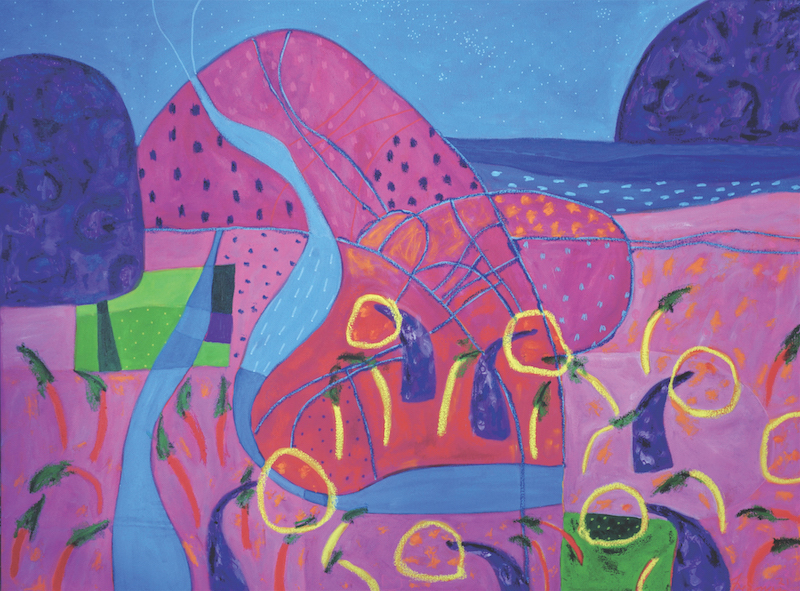What are you currently focusing on in your practice?
My work falls into the abstract expressionist category. One of the benefits of viewing abstract art is that it can engage the viewer at the most fundamental level – his or her own imagination. Drawing upon their own experiences, feelings and preferences, the viewer can derive their own unique response and meaning to the image. Non-representative images require the viewer to cease making value judgements about how good or bad an image is because it cannot be compared to an existing reality.
When and how did you first fall in love with art?
Art is something I have enjoyed since infancy. At school, art and creativity were a refuge from the difficulties of a new school and having no friends,
a way of escaping into the imaginary world, where my creative energy flowed. After leaving school I completed a number of degrees, including arts, fine arts and education. I taught art for about a decade and then ventured in the commercial world and focused on my growing family for the next 25 years. Although I dabbled in art over this period, it was not until my retirement six years ago that I was able to devote time and energy to my art practice.
Where do you find inspiration?
I explore art and the creative process as a reflective practice and a tool for self-inquiry. While I aim to create an aesthetically pleasing visual image, it is the process itself that delivers the greatest value, offering the opportunity to experience a deeper, intuitive knowing of self. The process of abstract painting enables me to explore inner feelings and awareness, recording an inner sense of place and experience. Using a range of visual elements – marks, lines, shapes, patterns and colour – I layer the image, exploring and experiencing the outcomes of my decisions and the interplay of these elements. Over time, the image evolves and takes on a life of its own, with frequently unexpected outcomes. Imagination and curiosity drive the creative process, which often morphs the image into the semblance of a geographical landscape with an associated mood or feeling. Inspired by the colours used in Fauvism, and the directness and spontaneity of children’s art, I use similar elements to create bright, colourful and joyful images that reflect my life journey.
What have you been working on recently?
I have been using extracts of my images and combining them with music to create short videos or vignettes. I use ambient music, a genre of music that focuses on sound patterns more than melodic form to evoke a certain atmospheric, visual, or unobtrusive quality or state of mind. It uses textural layers of sound including nature soundscapes, solfeggio frequencies and acoustic tones which can encourage a sense of calm or contemplation. I have collaborated with Little Symphony, an ambient music collective from Canada who create nature-inspired music for wellness. The main objective of these vignettes is to encourage an audience to view an image in different and multiple ways, enhancing mindfulness and wellbeing. As well as the vignettes being used in installations, I am developing a similar collection of NFT art assets which will be eventually released to the public.

